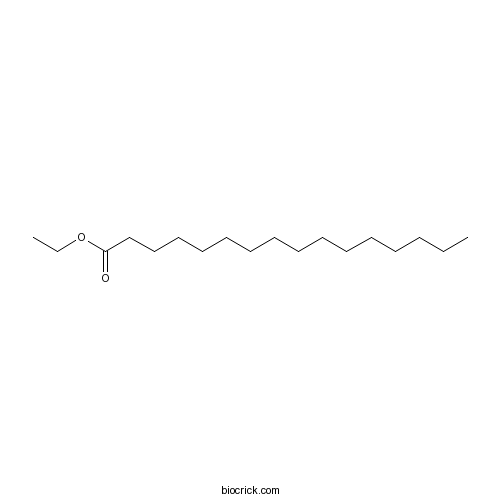Amorphophallus paeoniifolius
Amorphophallus paeoniifolius
1. The products in our compound library are selected from thousands of unique natural products; 2. It has the characteristics of diverse structure, diverse sources and wide coverage of activities; 3. Provide information on the activity of products from major journals, patents and research reports around the world, providing theoretical direction and research basis for further research and screening; 4. Free combination according to the type, source, target and disease of natural product; 5. The compound powder is placed in a covered tube and then discharged into a 10 x 10 cryostat; 6. Transport in ice pack or dry ice pack. Please store it at -20 °C as soon as possible after receiving the product, and use it as soon as possible after opening.
Natural products/compounds from Amorphophallus paeoniifolius
- Cat.No. Product Name CAS Number COA
-
BCN8298
Palmitic acid ethyl ester628-97-7
Instructions

Genetic diversity and structure of wild and cultivated Amorphophallus paeoniifolius populations in southwestern China as revealed by RAD-seq.[Pubmed: 29079830]
Amorphophallus paeoniifolius, is a commercially important vegetable crop because of its high production potential. In this study, we generated a total of 166 Gb of genomic data from 16 wild and 20 cultivated A. paeoniifolius individuals in southwestern China using restriction site associated DNA sequencing (RAD-seq). We compared the genome-wide variations between the wild and cultivated populations. Wild populations exhibited higher genetic diversity than did cultivated populations based on private allele number, expected heterozygosity, observed heterozygosity and nucleotide diversity. STRUCTURE analysis, principal component analysis (PCA) and a maximum likelihood (ML) tree indicated that A. paeoniifolius populations could be divided into three groups (a cultivated group and two wild groups) with significant genetic differentiation. The low genetic diversity and shallow genetic differentiation found within cultivated populations are likely caused by continuous selection and the clonal propagation methods used during domestication. The significant differentiation between the wild populations may suggest strong genetic drift due to small populations and human disturbance. The genome-wide single nucleotide polymorphisms (SNPs) identified in our study will provide a valuable resource for further breeding improvement and effective use of the germplasm.
Population structure of elephant foot yams (Amorphophallus paeoniifolius (Dennst.) Nicolson) in Asia.[Pubmed: 28658282]
The corms and leaves of elephant foot yams (Amorphophallus paeoniifolius (Dennst.) Nicolson) are important foods in the local diet in many Asian regions. The crop has high productivity and wide agroecological adaptation and exhibits suitability for the agroforestry system. Although the plant is assumed to reproduce via panmixia, a comprehensive study on the genetic background across regions to enhance wider consumer palatability is still lacking. Here, ten informative microsatellites were analyzed in 29 populations across regions in India, Indonesia and Thailand to understand the genetic diversity, population structure and distribution to improve breeding and conservation programs. The genetic diversity was high among and within regions. Some populations exhibited excess heterozygosity and bottlenecking. Pairwise FST indicated very high genetic differentiation across regions (FST = 0.274), and the Asian population was unlikely to be panmictic. Phylogenetic tree construction grouped the populations according to country of origin with the exception of the Medan population from Indonesia. The current gene flow was apparent within the regions but was restricted among the regions. The present study revealed that Indonesia and Thailand populations could be alternative centers of the gene pool, together with India. Consequently, regional action should be incorporated in genetic conservation and breeding efforts to develop new varieties with global acceptance.
Impact of γ-irradiation on physicochemical properties of freeze dried Amorphophallus paeoniifolius flour.[Pubmed: 28551237]
None
Beneficial effect of Amorphophallus paeoniifolius tuber on experimental ulcerative colitis in rats.[Pubmed: 27600166]
The tuber of Amorphophallus paeoniifolius (Dennst.) Nicolson (Araceae), commonly called Suran or Jimmikand, has high medicinal value and is used ethnomedicinally for the treatment of different gastrointestinal and inflammatory disorders.
Curative effect of Amorphophallus paeoniifolius tuber on experimental hemorrhoids in rats.[Pubmed: 27426509]
Amorphophallus paeoniifolius (Dennst.) Nicolson (Family- Araceae) is a crop of south East Asian origin. In India, its tuber is widely used in ethnomedicinal practices by different tribes for the treatment of piles (hemorrhoids).
Gastrokinetic activity of Amorphophallus paeoniifolius tuber in rats.[Pubmed: 27069720]
The tuber of Amorphophallus paeoniifolius (Family-Araceae), commonly called suran or jimikand, has medicinal and food value. It is used in ethnomedicinal practices for correction of gastrointestinal disturbances such as constipation and hemorrhoids. The present study evaluated the effect of A. paeoniifolius tuber on gastrointestinal motor functions.


